TIGER - Buckland Park Radar
In developing the Tasman International Geopspace Environment Radar (TIGER) the aim has been to extend the SuperDARN network in the Southern Hemisphere, but with the important difference of extending coverage to the sub-auroral region. This provides opportunity to observe new phenomena and to improve the coverage of auroral phenomena during magnetic storms when the aurora expands equator-ward of the footprints of the other radars in the SuperDARN network.
The South Australian component of TIGER is located on the outskirts of Adelaide at Buckland Park and began operation in December 2012. The Buckland Parks Radar's Field of view covers the lower latitude portion of the auroral oval and the ionospheric trough.
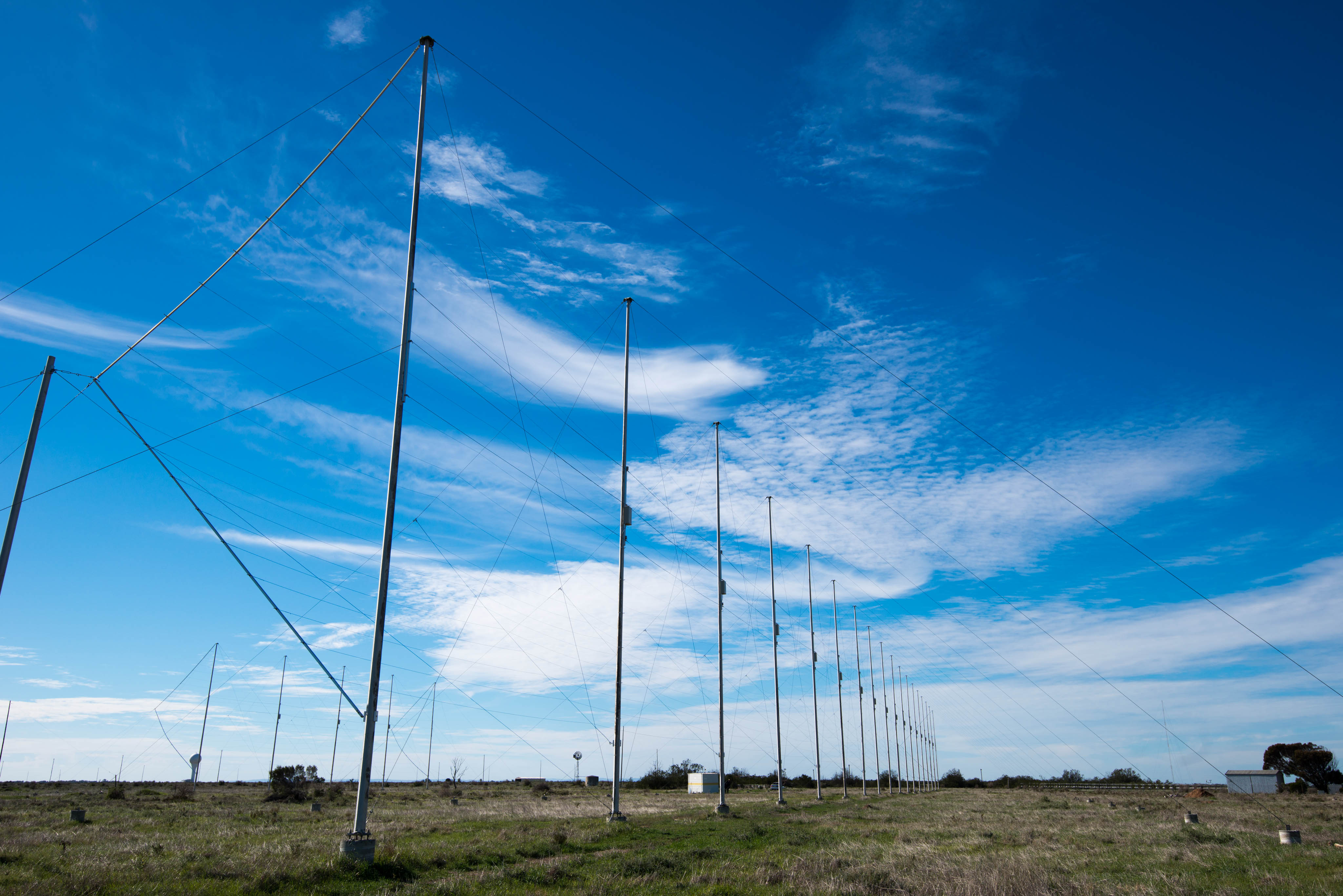 |
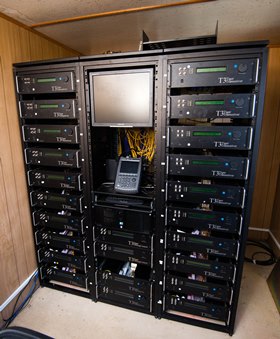 |
The Buckland Park radar is a fully digital HF radar with a transceiver per antenna. Compared to existing SuperDARN radars it represents up to an order of magnitude improvement in capability. This has been achieved through innovative electronic engineering including extensive use of reconfigurable on-chip hardware, coupled with a new antenna design and layout. Engineering and physics students have and continue to be, extensiviely involved in the design, development and use of the radar data, providing invaluable experience for the next generation of engineers and scientists. The radar clearly demonstrates Australia's capability as a world leader in the development of advanced remote monitoring instrumentation. Accordindly, the radar design is now also being used by research groups in South Africa and the United Kingdom.
The basic specifications of the Buckland Park radar are listed in the table below;
Frequency Band: 8 - 20MHz Antenna Arrays: Tx/Rx Array: 16 Horizontally polarised log-periodic
2nd Rx Array: 3 Horizontally polarised log-periodic
Point Rx "Array": 1 Horizontally polarised log-periodicBeam Widths: Horizontal: 4° at 10MHz, 3° at 14MHz, 2° at 18MHz
Vertical: 50°Lobe Levels: <- 14dB for both back and side lobes Transmitters: 20 x 2400W (one per antenna in Tx/Rx array) Total Peak Power: 38.4kW Mean Power: 800W Tx Signals: Pulse pattern duration: ~ 100ms
Pules width: 300us
Bandwidth: 10kHz at -20dB
Duty Cycle: 2.1% Carrier frequency
The radar operates as a fixed-frequency sounder, choosing a suitable frequency in the 8 - 20MHz band. The frequency selected is that which provides the greatest amount of ionospheric scatter across the radar footprint and which, due to ionospheric motions, has a significantly larger Doppler shift backscatter. Frequent changes in operating frequency would make it difficult to separate temporal variations of ionospheric and magneto spheric phenomena from propagation changes caused in operating frequency, so the radar nominally works within a small frequency band.
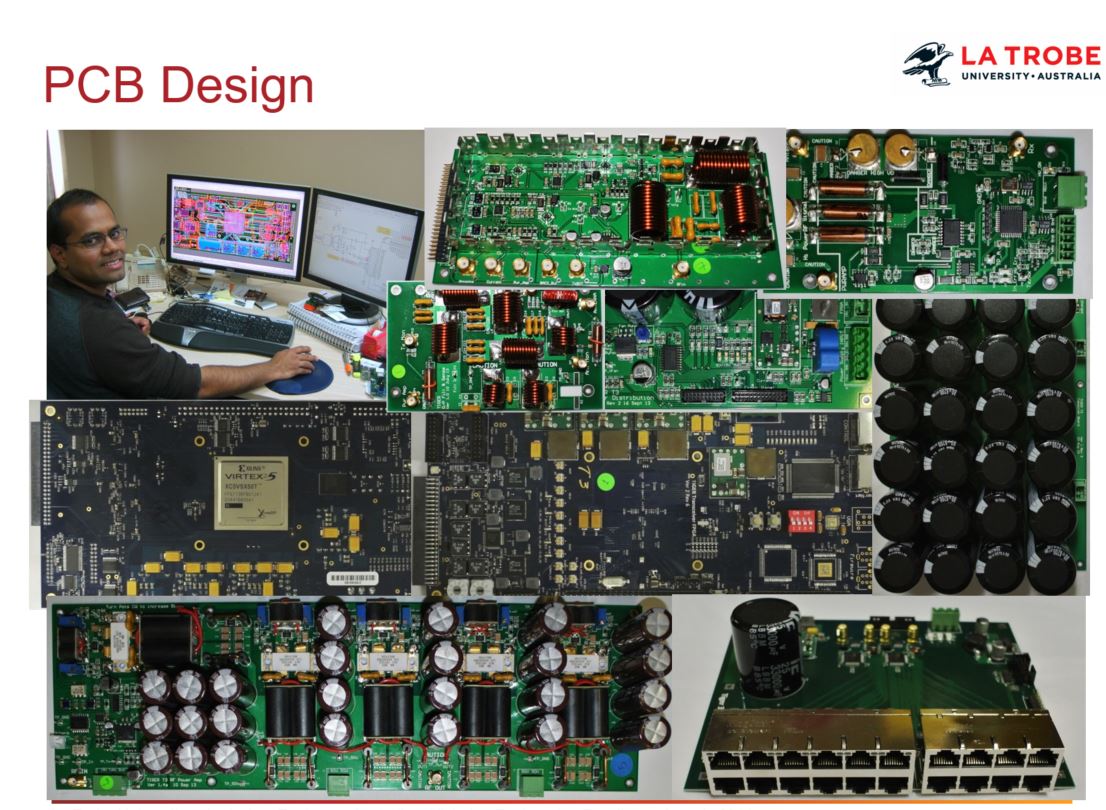 |
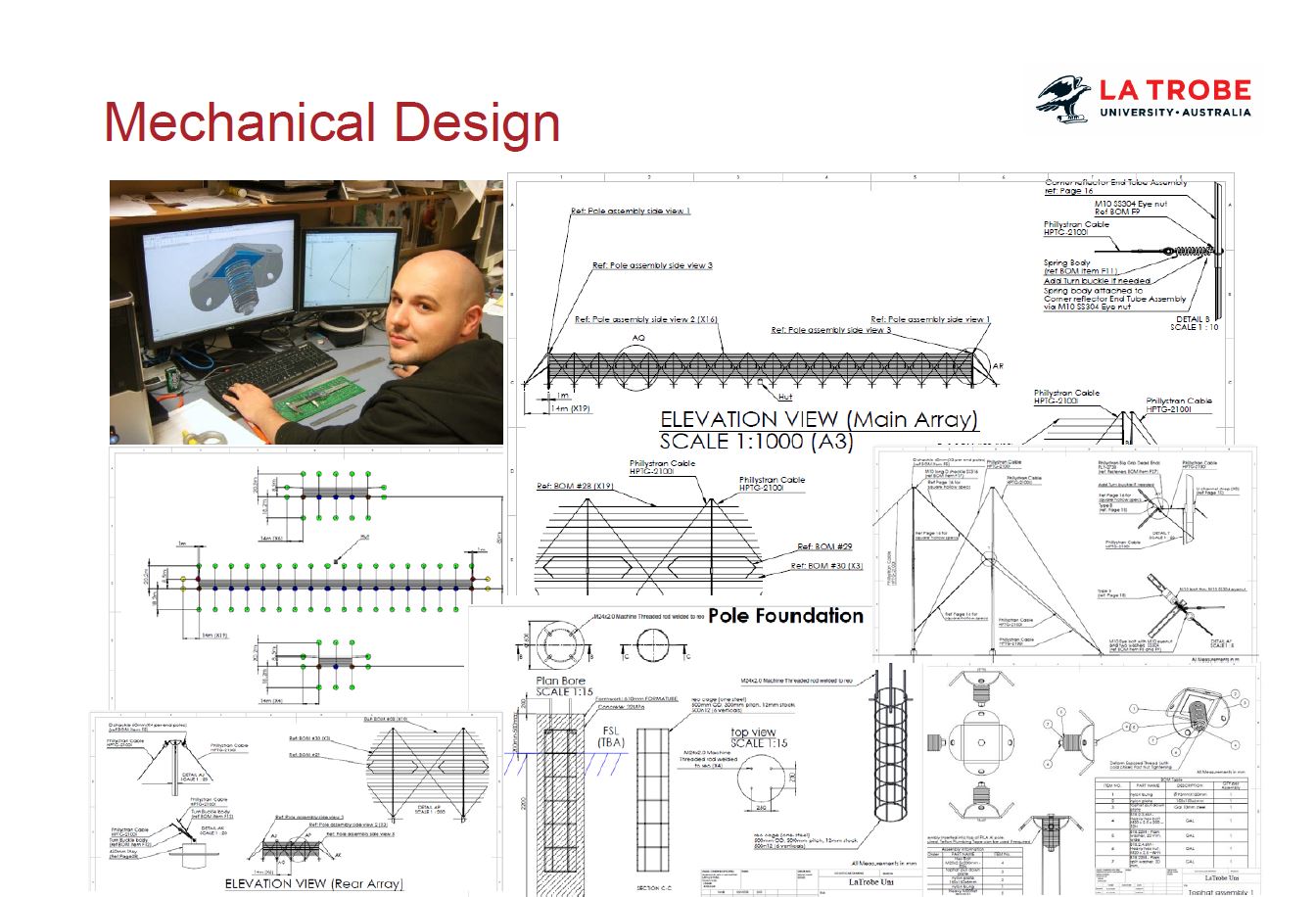 |
SuperDARN radars run the same campaigns and collect coordinated data at certain times. The schedules are distributed on a monthly basis and are divided into the following categories.
Schedule files are created every month from a schedule that is developed by the scheduling working group in consultation with all the radar consortiums. The schedule file calls up the radar control programs that are precompiled to achieve specific purposes. Campaigns are programed using Radar Control Programs which are written in the C language. These Contol Programs control the radar, as well as collecting and processing the data. The Common time Control Program run at Buckland Park is Normal scan. It has the following parameters.
Individual radars are further restricted by instrument capability and local regulations on the frequencies at which they are allowed to transmit.
The Tiger radars nominally are licensed for single frequency operation and are allowed to transmit in a number of bands on a non-interference basis. There are strict criteria that the bandwidth occupancy must meet, and this is determined by pulse shaping in the FPGA and the linearity of the hardware.
In 2014 the TIGER Digital radar team won the Australian Engineering Excellence National Award for Innovation as well as the Victorian Award for Innovation earlier in the same year. This very prestigious award was for the recognition of truly excellent work that had been undertaken by the TIGER team. The Award celebrated world class engineering in leading the development of this very sophisticated system which has put the Department of Engineering and La Trobe University on the International map in this field of research.
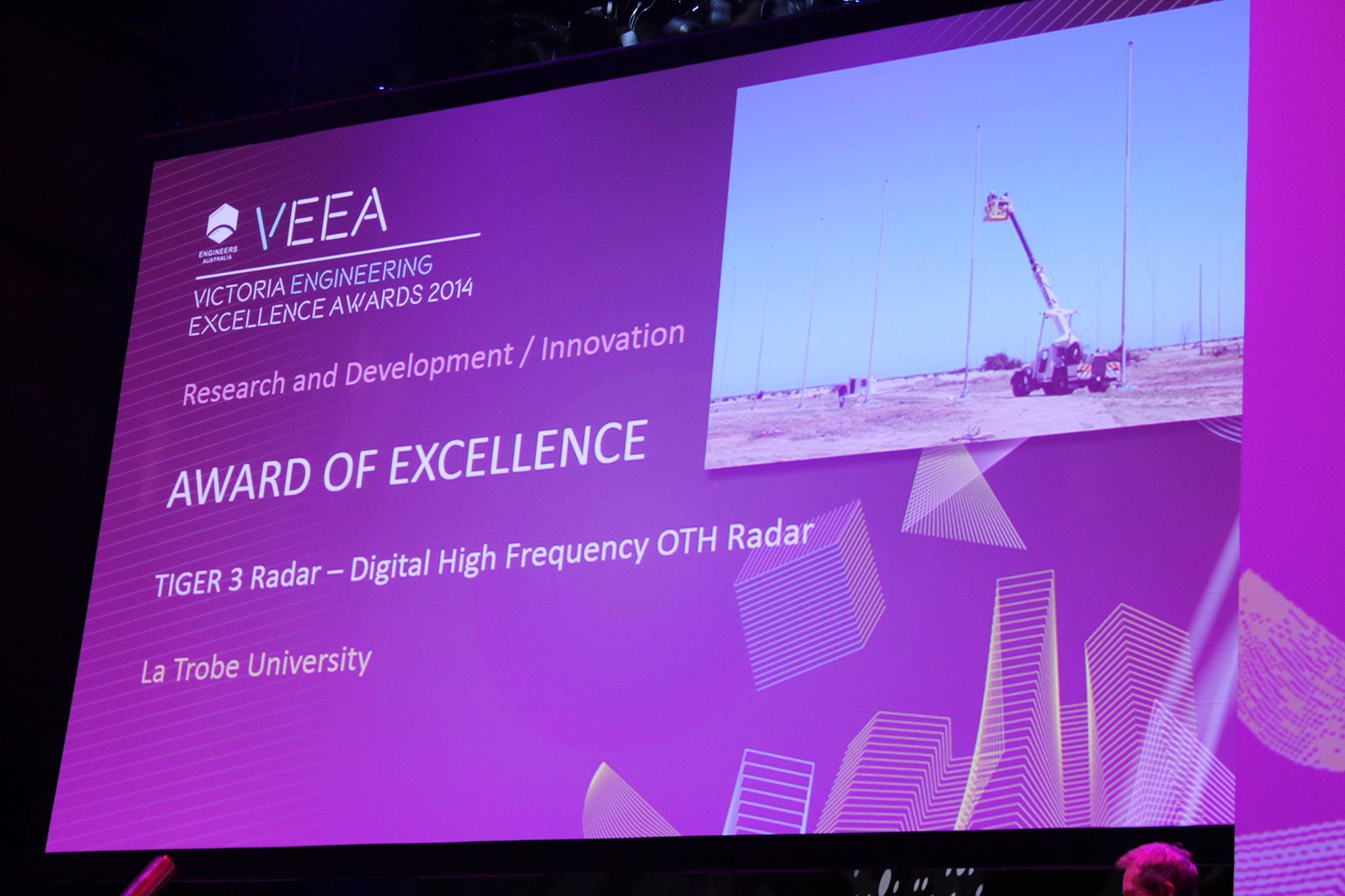 |
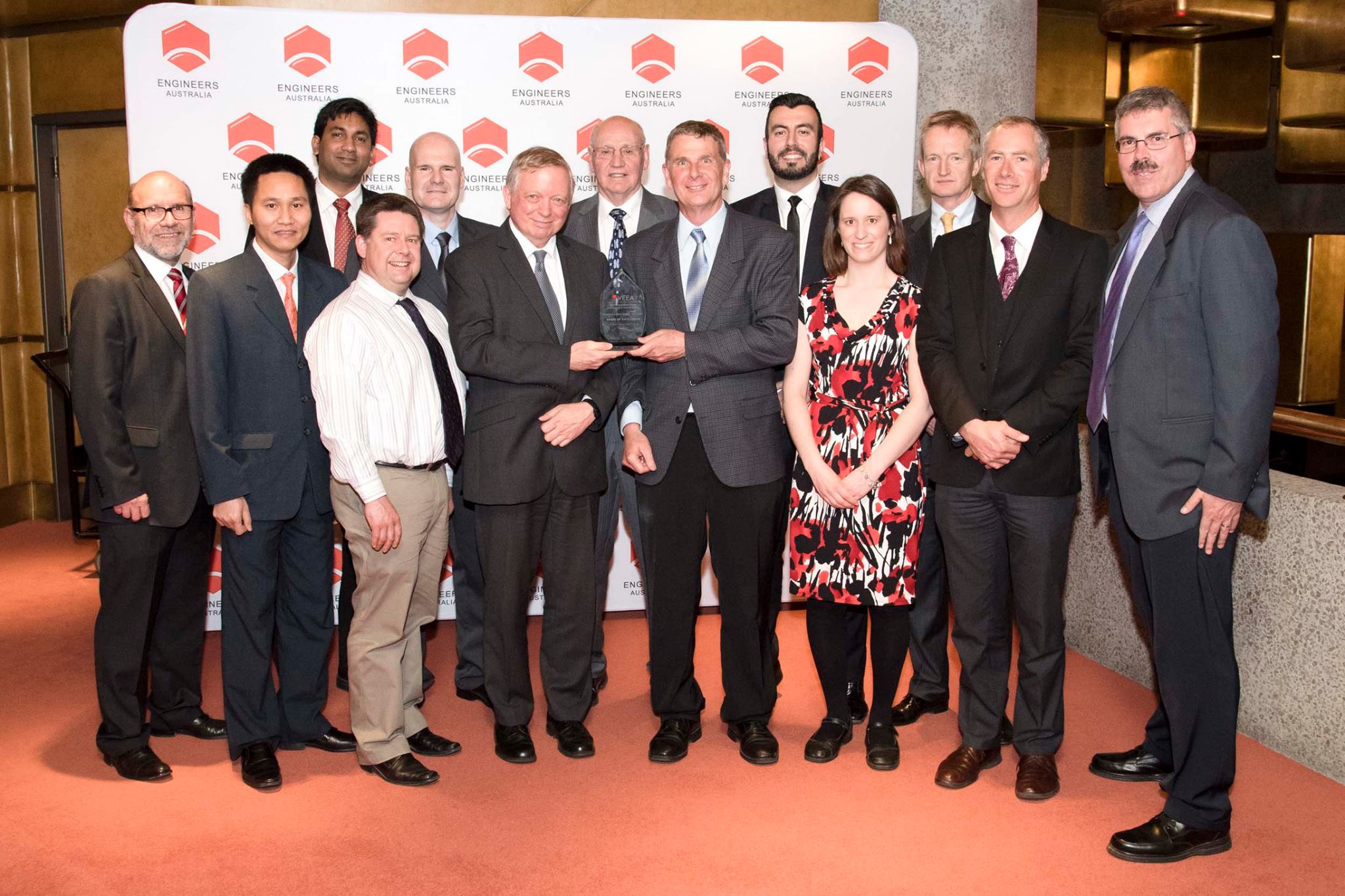 |
Documentation on Buckland Park Radar and Sample results
